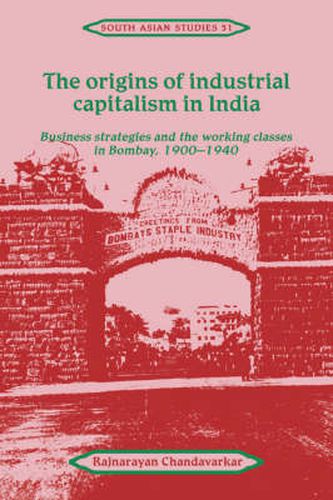Readings Newsletter
Become a Readings Member to make your shopping experience even easier.
Sign in or sign up for free!
You’re not far away from qualifying for FREE standard shipping within Australia
You’ve qualified for FREE standard shipping within Australia
The cart is loading…






Rajnarayan Chandavarkar presents the first major study of the relationship between labour and capital in India’s economic development in the early twentieth-century. He explores the emergence of capitalism in the region, the development of the cotton textile industry, its particular problems in the 1920s and 1930s and the mill owners’ and the state’s responses to them. The author also investigates how a labour force was formed in Bombay - its rural roots, urban networks, industrial organisation and the way in which it shaped capitalist strategies. In a subject dominated by the assumption of unities, Rajnarayan Chandavarkar convincingly demonstrates the fragmentation of class, on the side of both capital and labour. Their interaction sometimes exacerbated their internal differences. But, the author also asks on what terms, to what ends, and under what circumstances solidarities could be forged between workers.
$9.00 standard shipping within Australia
FREE standard shipping within Australia for orders over $100.00
Express & International shipping calculated at checkout
Rajnarayan Chandavarkar presents the first major study of the relationship between labour and capital in India’s economic development in the early twentieth-century. He explores the emergence of capitalism in the region, the development of the cotton textile industry, its particular problems in the 1920s and 1930s and the mill owners’ and the state’s responses to them. The author also investigates how a labour force was formed in Bombay - its rural roots, urban networks, industrial organisation and the way in which it shaped capitalist strategies. In a subject dominated by the assumption of unities, Rajnarayan Chandavarkar convincingly demonstrates the fragmentation of class, on the side of both capital and labour. Their interaction sometimes exacerbated their internal differences. But, the author also asks on what terms, to what ends, and under what circumstances solidarities could be forged between workers.